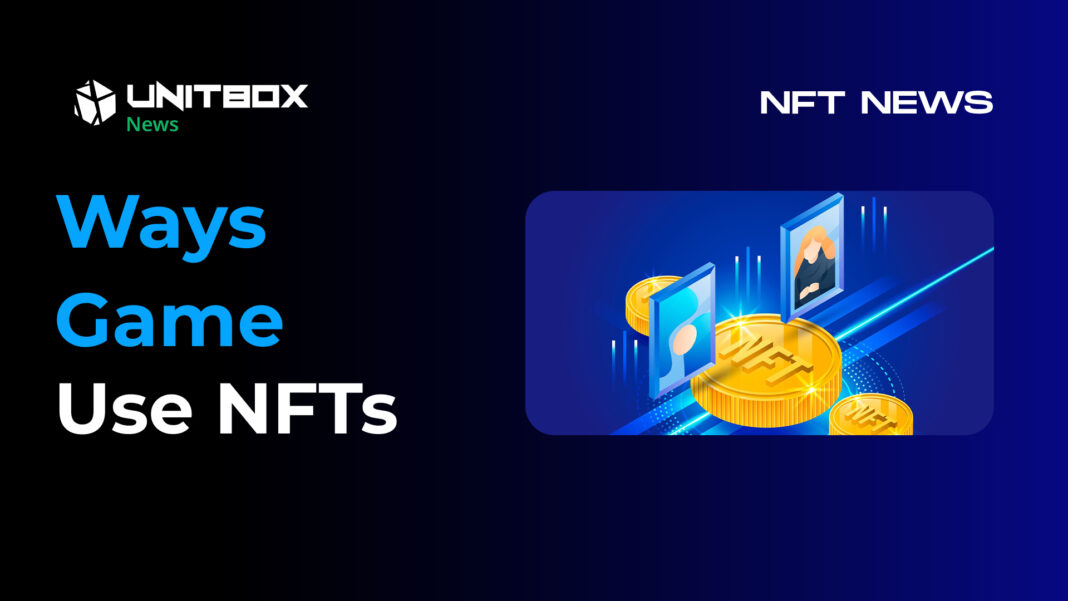Developers looking for new ways to engage with their audience are now leveraging the power of NFTs to create new and engaging experiences. Here are some innovative ways his NFTs can be used to keep players engaged in the game.
1. User Generated Content: NFTs open up new avenues for players to contribute to the game world. Imagine a scenario where a player designs in-game items, characters, or even entire environments and mints them as her NFTs. These items will be integrated into the game, allowing the creator to receive royalties from her NFT sales. Not only does it foster a sense of ownership, it also allows players to play an active role in shaping the game. Sandbox and Decentraland are two notable blockchain titles spearheading this model.
2. Special Collectibles: Rarity has always been the driving force behind the appeal of collectibles. Game developers can leverage NFTs to create limited-edition in-game items and skins that players can earn through purchases or achievements. These NFTs are able to hold intrinsic value due to their rarity and uniqueness, giving players a clear reason to keep playing to earn these exclusive items. For example, the mobile RPG Dragon Strike releases weekly powerful heroes that can be minted into NFTs.
3. Play to Earn/Own Mechanics: Initially known for powering the “play to earn” idea, NFTs are now either “play to earn” or “play to own” enables the concept of Gamers can earn valuable in-game assets in the form of her NFTs. These assets could be tradable, such as rare gear, skins, or even in-game virtual land. This turns gaming into a profitable endeavor, attracting hardcore and casual gamers looking to create value while enjoying the pastime they love.
4. Dynamic Storytelling: NFTs can bring new depth to your game’s narrative. Developers can release NFTs containing pieces of game lore, hidden clues, and even branching story paths. As players collect and trade these narrative NFTs of her, they will reveal new aspects of the game’s story and encourage exploration and collaboration among her community of players. Square Enix’s Symbiogenesis is his one of the games based on this model.
5. Limited Time Events and Challenges: To maintain an ongoing cycle of engagement, developers can create limited time events or challenges where players have the opportunity to win exclusive NFTs. These events range from in-game tournaments to community content creation challenges. By tying NFT rewards to these events, players are more likely to stay invested and engaged in the game.
6. Cross-game integration: NFTs can cross the boundaries of individual games by enabling cross-game integration. Imagine a scenario where a player’s avatar equipped with an NFT item could seamlessly transition between different games within the same franchise. This interconnection not only enhances the player’s experience, but also encourages players to explore different titles from the same developer.
7. Player-Owned Economy: Blockchain games can create a player-owned economy, where in-game assets are NFTs that can be freely traded outside the game. Developers can facilitate transactions between players by integrating the NFT Marketplace into their games. Not only does this give players greater autonomy over their virtual possessions, it also encourages a thriving virtual economy.
8. Influencer and Community Engagement: NFTs can be used to strengthen relationships with influencers and the player community. Developers can mint limited-edition NFTs of her tied to popular influencers, or create NFTs of her that act as tokens of appreciation for active members. This promotes exclusivity and recognition, fostering ongoing engagement and loyalty.
9. Virtual Real Estate and Land Ownership: Some games have begun experimenting with virtual real estate that allows players to buy, sell and develop virtual land within the game. These virtual properties will be tokenized as his NFTs and can be used for a variety of purposes, from building structures to hosting events. This opens up realms of creative possibilities for players and opens up new avenues of engagement.
10. Gameplay Evolution: NFTs can also evolve gameplay by allowing players to upgrade, customize, or combine assets. Weapon NFTs, for example, gain experience and can mutate into more powerful variants over time. This dynamic progression encourages players to use her NFTs to get involved, leading to better retention.
Overall, NFT is reshaping the gaming landscape by introducing new dimensions of engagement and ownership. Developers can leverage these virtual assets to create immersive experiences that resonate with players on a deeper level. From user-generated content and exclusive collectibles to dynamic storytelling and play-to-earn mechanics, NFTs offer many opportunities to attract and retain players in a rapidly growing industry. As NFT technology continues to mature, the gaming world offers endless creative possibilities for increasing player engagement.
??♂️ Choose and check Play-To-Earn Games and Yield Guilds: HUB.UNITBOX.IO — the largest GameFi and NFT aggregator!

